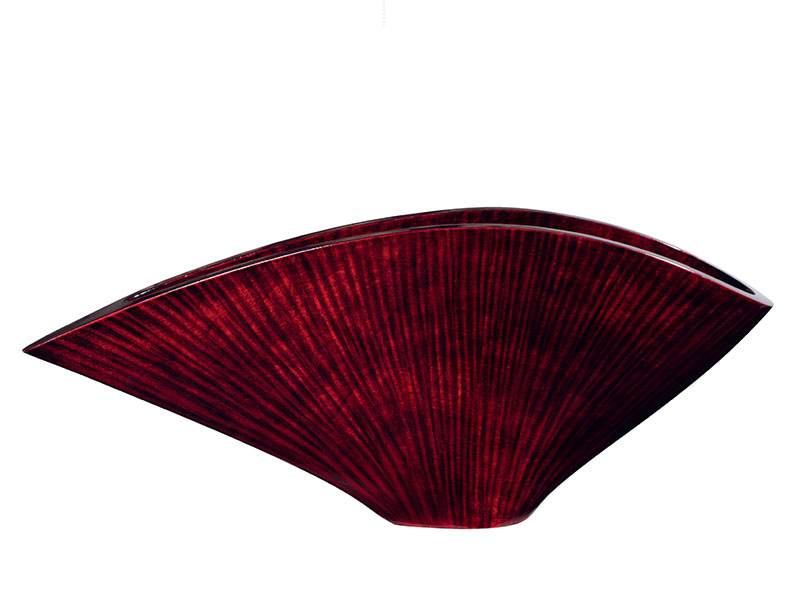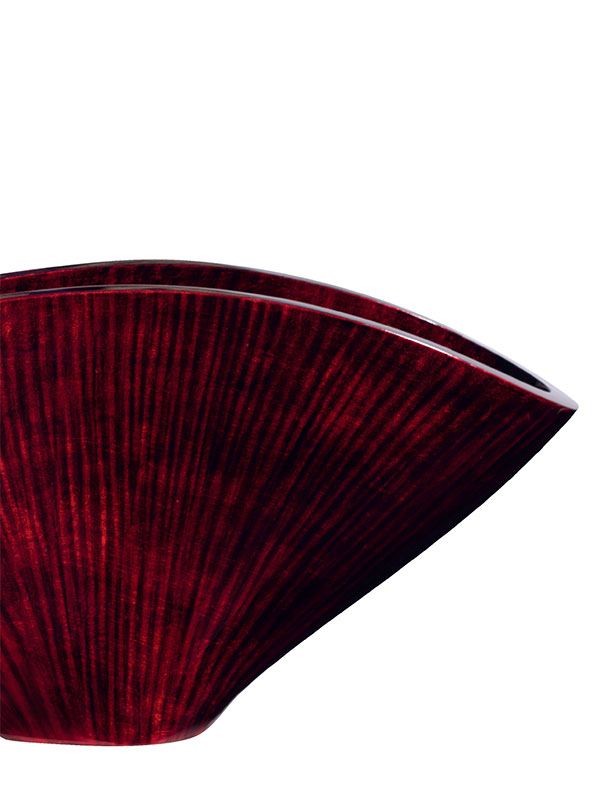Dry lacquer kanshitsu vase
Japan, Showa period, 1926 - 1989
A dry lacquer vase of extravagant, folded teardrop shape, the sides rising and tapering outwards from a small base with recessed square in the centre. The sides are lacquered in a glossy stripe design in ruby red, resembling enamel. The base is lacquered black. The interior of the vase is covered in a mixture of red and black lacquer.
The kanshitsu (dry lacquer) technique is a process in Japanese decorative arts in which a figure or vessel is fashioned with many layers of hemp cloth soaked with lacquer, the surface details being subsequently modelled with a mixture of lacquer, sawdust, powdered clay stone, and other materials. Producing this vase the hollow kanshitsu (called dakkatsu) technique was employed; the rough shape is made in clay and the surface is covered with lacquered hemp cloth. The clay is then removed to leave the inside hollow. Kanshitsu was imported to Japan from Tang China in the Nara period (645–794) and has remained popular ever since.


